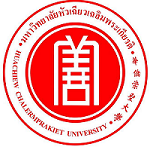Please use this identifier to cite or link to this item:
https://has.hcu.ac.th/jspui/handle/123456789/1821| Title: | In Silico Target Identification of Galangin, as an Herbal Flavonoid against Cholangiocarcinoma |
| Authors: | Brinda Balasubramanian Simran Venkatraman Kyaw Zwar Myint Sucheewin Krobthong Patompon Wongtrakoongate Jittiyawadee Sripa Panthip Rattanasinganchan Pornphimon Metheenukul Rutaiwan Tohtong สุชีวัน กรอบทอง ปฐมพล วงศ์ตระกูลเกตุ จิตติยวดี ศรีภา ปานทิพย์ รัตนศิลป์กัลชาญ พรพิมล เมธีนุกูล ฤทัยวรรณ โต๊ะทอง Mahidol University. Faculty of Science Mahidol University. Faculty of Science. Graduate Program in Molecular Medicine Mahidol University. Faculty of Science Mahidol University. Faculty of Science Mahidol University. Faculty of Science Ubon Ratchathani University. College of Medicine and Public Health Huachiew Chalermprakiet University. Faculty of Medicine Technology Kasetsart University. Faculty of Veterinary Technology Mahidol University. Faculty of Science |
| Keywords: | Cholangiocarcinoma ท่อน้ำดี -- มะเร็ง Bile ducts -- Cancer โรคพยาธิใบไม้ตับ Liver flukes Galangin แกลาจิน ยารักษามะเร็ง Antineoplastic agents |
| Issue Date: | 2022 |
| Citation: | Molecules 2022, 27(14), 4664 |
| Abstract: | Cholangiocarcinoma (CCA) is a heterogenous group of malignancies in the bile duct, which proliferates aggressively. CCA is highly prevalent in Northeastern Thailand wherein it is associated with liver fluke infection, or Opisthorchis viverrini (OV). Most patients are diagnosed in advanced stages, when the cancer has metastasized or severely progressed, thereby limiting treatment options. Several studies investigate the effect of traditional Thai medicinal plants that may be potential therapeutic options in combating CCA. Galangin is one such herbal flavonoid that has medicinal properties and exhibits anti-tumor properties in various cancers. In this study, we investigate the role of Galangin in inhibiting cell proliferation, invasion, and migration in OVinfected CCA cell lines. We discovered that Galangin reduced cell viability and colony formation by inducing apoptosis in CCA cell lines in a dose-dependent manner. Further, Galangin also effectively inhibited invasion and migration in OV-infected CCA cells by reduction of MMP2 and MMP9 enzymatic activity. Additionally, using proteomics, we identified proteins affected post-treatment with Galangin. Enrichment analysis revealed that several kinase pathways were affected by Galangin, and the signature corroborated with that of small molecule kinase inhibitors. Hence, we identified putative targets of Galangin using an in silico approach which highlighted c-Met as candidate target. Galangin effectively inhibited c-Met phosphorylation and subsequent signaling in in vitro CCA cells. In addition, Galangin was able to inhibit HGF, a mediator of c-Met signaling, by suppressing HGF-stimulated invasion, as well as migration and MMP9 activity. This shows that Galangin can be a useful anti-metastatic therapeutic strategy in a subtype of CCA patients. |
| Description: | สามารถเข้าถึงบทความฉบับเต็มได้ที่ https://www.mdpi.com/1420-3049/27/14/4664 |
| URI: | https://has.hcu.ac.th/jspui/handle/123456789/1821 |
| Appears in Collections: | Medical Technology - Articles Journals |
Files in This Item:
| File | Description | Size | Format | |
|---|---|---|---|---|
| In-Silico-Target-Identification-of-Galangin.pdf | 2.83 MB | Adobe PDF | View/Open |
Items in DSpace are protected by copyright, with all rights reserved, unless otherwise indicated.
